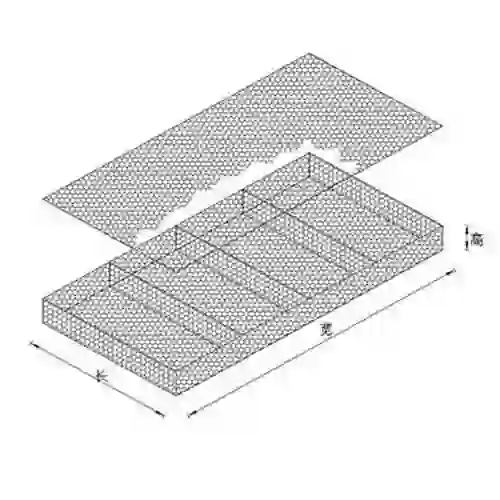-
 Phone:
Phone: -
 Email:
Email:

Effective Solutions for Rockfall Prevention Using Protective Netting Systems
Rockfall Protection Netting A Critical Solution for Safety and Infrastructure
Rockfalls pose a significant hazard in mountainous and hilly areas, threatening both human life and infrastructure. The unpredictability of falling rocks necessitates effective protective measures, and one of the most tried-and-true solutions is rockfall protection netting. This article delves into the importance, types, installation methods, and benefits of rockfall protection netting.
Understanding Rockfall Hazards
Rockfalls occur when rocks become loose due to various natural factors, such as freeze-thaw cycles, erosion, or seismic activity. These events can lead to the descent of substantial boulders that can have catastrophic consequences for buildings, roads, vehicles, and people. The need for protective measures in areas prone to rockfall is critical; this is where rockfall protection netting comes into play.
The Role of Rockfall Protection Netting
Rockfall protection netting is designed primarily to catch falling rocks, preventing them from causing damage further down the slope. This type of netting acts as a barrier, effectively holding back debris that might otherwise create dangerous conditions for both pedestrians and motorists. Additionally, it can serve as a support system for stabilizing loose rock masses, reducing the likelihood of larger falls.
Types of Rockfall Protection Netting
There are several types of rockfall protection netting, each suited for specific conditions and project requirements
1. Flexible Netting This is made from high-tensile steel wire and is flexible enough to absorb and redistribute the energy from falling rocks. It is often used in areas with smaller or moderate-sized rockfalls.
2. Rope Netting Constructed from durable rope materials, this type is ideal for covering steep slopes where debris may be more widespread. It is lightweight and easier to install in challenging terrains.
3. Mesh Panels Used in conjunction with cable support systems, these panels offer enhanced protection for large or heavy rockfalls. They are a more permanent solution, often preferred for high-risk locations.
4. Heavy-Duty Systems Designed for extreme scenarios, these systems include thicker wires and larger mesh openings to withstand the forces of larger boulders. They may incorporate additional engineering features, such as anchors and support structures.
Installation Methods
The installation of rockfall protection netting requires careful planning and execution. The process generally involves the following steps
rockfall protection netting

1. Site Assessment A thorough evaluation of the area is conducted to identify potential rockfall sources and assess current geological conditions.
2. Design and Engineering Based on the assessment, engineers will design a netting system that accounts for the type of rockfall expected, environmental conditions, and any infrastructural elements that need protection.
3. Ground Preparation Installing the netting may involve clearing out loose debris, grading the slopes, and preparing anchor points where the netting will be secured.
4. Assembly and Installation The netting is brought to the site and assembled as per design specifications. It’s typically anchored into the ground or rock face using bolts or other secure methods to ensure stability.
5. Final Inspection and Maintenance After installation, the system is inspected for quality and effectiveness. Regular maintenance checks are essential to ensure the netting remains intact and functional over time.
Benefits of Rockfall Protection Netting
Investing in rockfall protection netting offers numerous benefits, including
- Safety The primary advantage is enhanced safety for individuals near rockfall prone areas, significantly reducing the risk of injury or fatalities.
- Asset Protection It safeguards infrastructure, including roads, railways, and buildings, limiting potential property damage and costly repairs.
- Cost-Effectiveness Although installation requires initial investment, the long-term savings from preventing disasters outweigh these costs.
- Environmental Protection By stabilizing slopes, rockfall protection netting can contribute to greater ecological stability, preserving natural landscapes and habitats.
Conclusion
Rockfall protection netting is a vital component of modern landscape management and infrastructure protection in mountainous areas. By effectively intercepting falling rocks, it not only saves lives but also preserves valuable assets. As we continue to face challenges from natural events, investing in robust protective measures like rockfall netting remains essential for safety and sustainability in our ever-changing environment.
-
Wire Mesh for Every Need: A Practical SolutionNewsJul.25,2025
-
Steel Fences: Durable, Secure, and Stylish OptionsNewsJul.25,2025
-
Roll Top Fencing: A Smart Solution for Safety and SecurityNewsJul.25,2025
-
Cattle Farm Fencing Solutions for Maximum SecurityNewsJul.25,2025
-
Affordable Iron Binding Wire SolutionsNewsJul.25,2025
-
Affordable Galvanized Wire SolutionsNewsJul.25,2025
-
Wire Hanger Recycling IdeasNewsJul.25,2025








